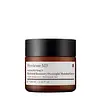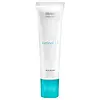What's inside
What's inside
 Key Ingredients
Key Ingredients

 Benefits
Benefits

 Concerns
Concerns

 Ingredients Side-by-side
Ingredients Side-by-side

Water
Skin ConditioningCaprylic/Capric Triglyceride
MaskingC12-15 Alkyl Benzoate
AntimicrobialPropanediol
SolventShea Butter Ethyl Esters
EmollientDicaprylyl Carbonate
EmollientCetearyl Alcohol
EmollientDimethicone
EmollientSqualane
EmollientBehenyl Alcohol
EmollientHydrogenated Vegetable Glycerides
EmollientIsoamyl Laurate
EmollientAleurites Moluccanus Seed Oil
Skin ConditioningGlyceryl Stearate
EmollientPEG-100 Stearate
Hydrogenated Vegetable Oil
EmollientHydrogenated Soybean Oil
EmollientCeteareth-20
CleansingGlycerin
HumectantPhenoxyethanol
PreservativePolysilicone-11
Sodium Stearoyl Glutamate
CleansingHydrogenated Olive Oil
Skin ConditioningCitric Acid
BufferingDimethyl Mea
BufferingPetrolatum
EmollientHydrogenated Jojoba Oil
AbrasiveEthylhexylglycerin
Skin ConditioningRetinol
Skin ConditioningRetinyl Linoleate
Skin ConditioningXanthan Gum
EmulsifyingPolysorbate 20
EmulsifyingParfum
MaskingTetrasodium Glutamate Diacetate
Helianthus Annuus Seed Oil
EmollientGlycine Soja Lipids
Skin ConditioningMaltodextrin
AbsorbentPentylene Glycol
Skin ConditioningCetyl Palmitate
EmollientLaureth-23
CleansingDisodium Acetyl Glucosamine Phosphate
Skin ConditioningSodium Glucuronate
HumectantNephelium Lappaceum Leaf Extract
Skin ConditioningSodium Acetylated Hyaluronate
HumectantSodium Hyaluronate
HumectantCeramide NP
Skin ConditioningSodium Hydroxide
BufferingTrideceth-6 Phosphate
EmulsifyingMagnesium Aspartate
Skin ConditioningZinc Gluconate
Skin ConditioningRosmarinus Officinalis Leaf Extract
AntimicrobialMagnesium Sulfate
Sodium Hyaluronate Crosspolymer
HumectantHyaluronic Acid
HumectantPhytosterols
Skin ConditioningTocopherol
AntioxidantCopper Gluconate
Skin ConditioningCitronellol
PerfumingGeraniol
PerfumingHydroxycitronellal
PerfumingEugenol
PerfumingWater, Caprylic/Capric Triglyceride, C12-15 Alkyl Benzoate, Propanediol, Shea Butter Ethyl Esters, Dicaprylyl Carbonate, Cetearyl Alcohol, Dimethicone, Squalane, Behenyl Alcohol, Hydrogenated Vegetable Glycerides, Isoamyl Laurate, Aleurites Moluccanus Seed Oil, Glyceryl Stearate, PEG-100 Stearate, Hydrogenated Vegetable Oil, Hydrogenated Soybean Oil, Ceteareth-20, Glycerin, Phenoxyethanol, Polysilicone-11, Sodium Stearoyl Glutamate, Hydrogenated Olive Oil, Citric Acid, Dimethyl Mea, Petrolatum, Hydrogenated Jojoba Oil, Ethylhexylglycerin, Retinol, Retinyl Linoleate, Xanthan Gum, Polysorbate 20, Parfum, Tetrasodium Glutamate Diacetate, Helianthus Annuus Seed Oil, Glycine Soja Lipids, Maltodextrin, Pentylene Glycol, Cetyl Palmitate, Laureth-23, Disodium Acetyl Glucosamine Phosphate, Sodium Glucuronate, Nephelium Lappaceum Leaf Extract, Sodium Acetylated Hyaluronate, Sodium Hyaluronate, Ceramide NP, Sodium Hydroxide, Trideceth-6 Phosphate, Magnesium Aspartate, Zinc Gluconate, Rosmarinus Officinalis Leaf Extract, Magnesium Sulfate, Sodium Hyaluronate Crosspolymer, Hyaluronic Acid, Phytosterols, Tocopherol, Copper Gluconate, Citronellol, Geraniol, Hydroxycitronellal, Eugenol
Water
Skin ConditioningCaprylic/Capric Triglyceride
MaskingGlyceryl Stearate
EmollientCyclopentasiloxane
EmollientButylene Glycol
HumectantStearic Acid
CleansingButyrospermum Parkii Butter
Skin ConditioningPolysorbate 60
EmulsifyingStearyl Alcohol
EmollientGlycerin
HumectantAllyl Methacrylates Crosspolymer
Emulsion StabilisingRetinol
Skin ConditioningPolysorbate 20
EmulsifyingDimethicone
EmollientSimmondsia Chinensis Seed Oil
EmollientChamomilla Recutita Flower Extract
MaskingHypericum Perforatum Flower Extract
Skin ConditioningMalva Sylvestris Flower Extract
Skin ConditioningSalvia Officinalis Leaf Extract
CleansingSambucus Nigra Flower Extract
RefreshingCyclohexasiloxane
EmollientSorbitol
HumectantTocopheryl Acetate
AntioxidantAscorbic Acid
AntioxidantUbiquinone
AntioxidantSodium Hyaluronate
HumectantPropylene Glycol
HumectantBHT
AntioxidantBisabolol
MaskingDimethicone/Vinyl Dimethicone Crosspolymer
Skin ConditioningDipotassium Glycyrrhizate
HumectantDisodium EDTA
Triethanolamine
BufferingCarbomer
Emulsion StabilisingGlyceryl Acrylate/Acrylic Acid Copolymer
HumectantCaprylyl Glycol
EmollientEthylhexylglycerin
Skin ConditioningHexylene Glycol
EmulsifyingPhenoxyethanol
PreservativeWater, Caprylic/Capric Triglyceride, Glyceryl Stearate, Cyclopentasiloxane, Butylene Glycol, Stearic Acid, Butyrospermum Parkii Butter, Polysorbate 60, Stearyl Alcohol, Glycerin, Allyl Methacrylates Crosspolymer, Retinol, Polysorbate 20, Dimethicone, Simmondsia Chinensis Seed Oil, Chamomilla Recutita Flower Extract, Hypericum Perforatum Flower Extract, Malva Sylvestris Flower Extract, Salvia Officinalis Leaf Extract, Sambucus Nigra Flower Extract, Cyclohexasiloxane, Sorbitol, Tocopheryl Acetate, Ascorbic Acid, Ubiquinone, Sodium Hyaluronate, Propylene Glycol, BHT, Bisabolol, Dimethicone/Vinyl Dimethicone Crosspolymer, Dipotassium Glycyrrhizate, Disodium EDTA, Triethanolamine, Carbomer, Glyceryl Acrylate/Acrylic Acid Copolymer, Caprylyl Glycol, Ethylhexylglycerin, Hexylene Glycol, Phenoxyethanol
Ingredients Explained
These ingredients are found in both products.
Ingredients higher up in an ingredient list are typically present in a larger amount.
This ingredient is an emollient, solvent, and texture enhancer. It is considered a skin-softener by helping the skin prevent moisture loss.
It helps thicken a product's formula and makes it easier to spread by dissolving clumping compounds.
Caprylic Triglyceride is made by combining glycerin with coconut oil, forming a clear liquid.
While there is an assumption Caprylic Triglyceride can clog pores due to it being derived from coconut oil, there is no research supporting this.
Learn more about Caprylic/Capric TriglycerideDimethicone is a type of synthetic silicone created from natural materials such as quartz.
What it does:
Dimethicone comes in different viscosities:
Depending on the viscosity, dimethicone has different properties.
Ingredients lists don't always show which type is used, so we recommend reaching out to the brand if you have questions about the viscosity.
This ingredient is unlikely to cause irritation because it does not get absorbed into skin. However, people with silicone allergies should be careful about using this ingredient.
Note: Dimethicone may contribute to pilling. This is because it is not oil or water soluble, so pilling may occur when layered with products. When mixed with heavy oils in a formula, the outcome is also quite greasy.
Learn more about DimethiconeEthylhexylglycerin (we can't pronounce this either) is commonly used as a preservative and skin softener. It is derived from glyceryl.
You might see Ethylhexylglycerin often paired with other preservatives such as phenoxyethanol. Ethylhexylglycerin has been found to increase the effectiveness of these other preservatives.
Glycerin is already naturally found in your skin. It helps moisturize and protect your skin.
A study from 2016 found glycerin to be more effective as a humectant than AHAs and hyaluronic acid.
As a humectant, it helps the skin stay hydrated by pulling moisture to your skin. The low molecular weight of glycerin allows it to pull moisture into the deeper layers of your skin.
Hydrated skin improves your skin barrier; Your skin barrier helps protect against irritants and bacteria.
Glycerin has also been found to have antimicrobial and antiviral properties. Due to these properties, glycerin is often used in wound and burn treatments.
In cosmetics, glycerin is usually derived from plants such as soybean or palm. However, it can also be sourced from animals, such as tallow or animal fat.
This ingredient is organic, colorless, odorless, and non-toxic.
Glycerin is the name for this ingredient in American English. British English uses Glycerol/Glycerine.
Learn more about GlycerinGlyceryl Stearate is a mix of glycerin and stearic acid.
It is used to stabilize the mixing of water and oil ingredients. By preventing these ingredients from separating, it can help elongate shelf life. It can also help thicken the product's texture.
As an emollient, it helps soften skin and supports barrier-replenishing ingredients.
In cosmetics, Glyceryl Stearate is often made from vegetable oils or synthetically produced.
This ingredient may not be fungal-acne safe
Fun fact: The human body also creates Glyceryl Stearate naturally.
Learn more about Glyceryl StearatePhenoxyethanol is a preservative that has germicide, antimicrobial, and aromatic properties. Studies show that phenoxyethanol can prevent microbial growth. By itself, it has a scent that is similar to that of a rose.
It's often used in formulations along with Caprylyl Glycol to preserve the shelf life of products.
Polysorbate 20 is made by combining ethoxylation of sorbitan, ethylene oxide, and lauric acid. It is a mild cleansing agent, surfactant, and emulsifier.
As a surfactant, it helps collect dirt and oils for washing. Emulsifiers prevent oils and water from separating.
Polysorbate 20 also adds scent to a product. Since it is made using sorbitol, it has a sweet scent. Sorbitol can also be found in fruits such as apples and peaches.
The lauric acid used to create Polysorbate 20 is often derived from coconuts.
Polysorbate 20 may not be fungal acne safe.
Learn more about Polysorbate 20Retinol is a gold-standard ingredient for anti-aging. It is a form of Vitamin A and belongs to the class of retinoids that also includes tretinoin.
Why is retinol famous?
It has the most scientific studies backing up its skin benefits out of all the non-prescription ingredients.
Retinol is proven to:
This is why retinol is effective at removing wrinkles, fading dark spots, treating acne, and reducing the appearance of pores.
Studies show retinol is less effective when exposed to UV. Be sure to look for appropriate packaging to keep your retinol potent (similar to Vitamin C).
Using retinol or any retinoids will increase sun-sensitivity in the first few months. Though studies show retinoids increase your skin's natural SPF with continuous use, it is best to always wear sunscreen and sun-protection.
We recommend speaking with a medical professional about using this ingredient during pregnancy.
Retinol may cause irritation in some people, so be sure to patch test. Experts recommend 'ramping up' retinol use: start using this ingredient once a week and work up to using it daily.
Read about Tretinoin
Learn more about RetinolSodium Hyaluronate is hyaluronic acid's salt form. It is commonly derived from the sodium salt of hyaluronic acid.
Like hyaluronic acid, it is great at holding water and acts as a humectant. This makes it a great skin hydrating ingredient.
Sodium Hyaluronate is naturally occurring in our bodies and is mostly found in eye fluid and joints.
These are some other common types of Hyaluronic Acid:
Learn more about Sodium HyaluronateWater. It's the most common cosmetic ingredient of all. You'll usually see it at the top of ingredient lists, meaning that it makes up the largest part of the product.
So why is it so popular? Water most often acts as a solvent - this means that it helps dissolve other ingredients into the formulation.
You'll also recognize water as that liquid we all need to stay alive. If you see this, drink a glass of water. Stay hydrated!
Learn more about Water